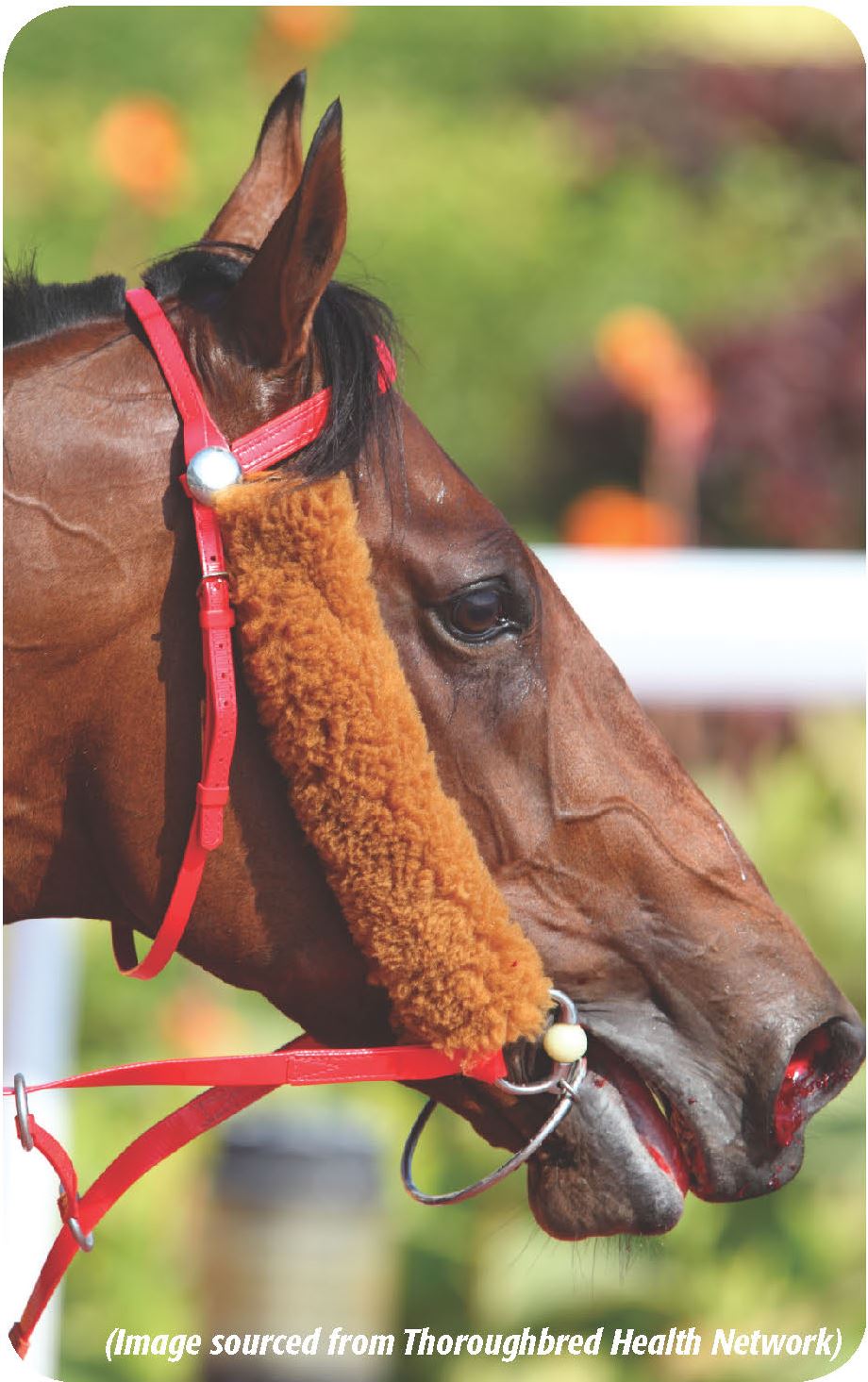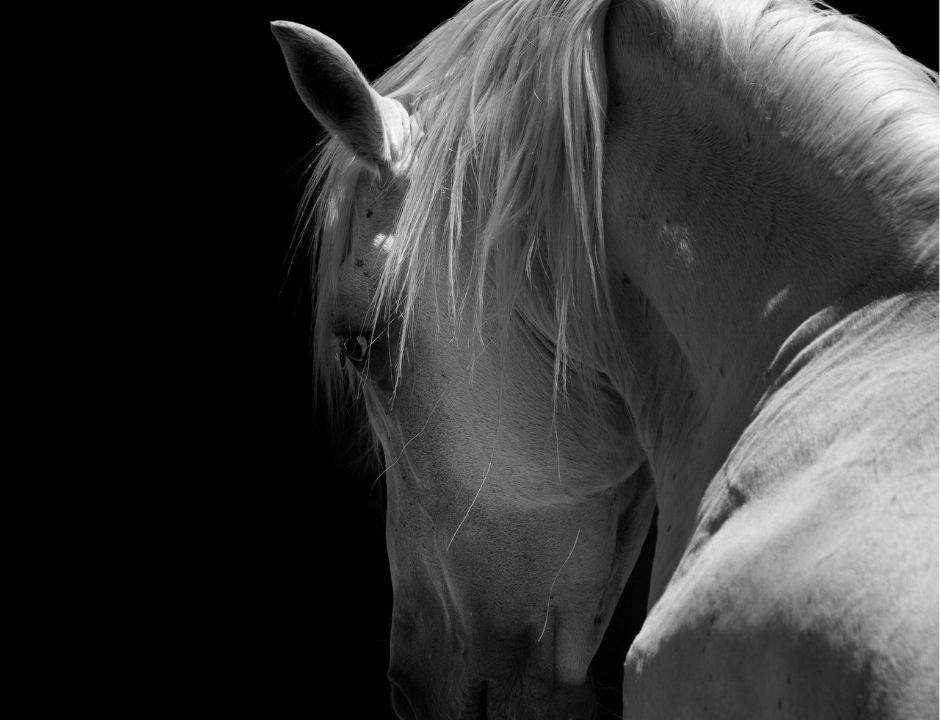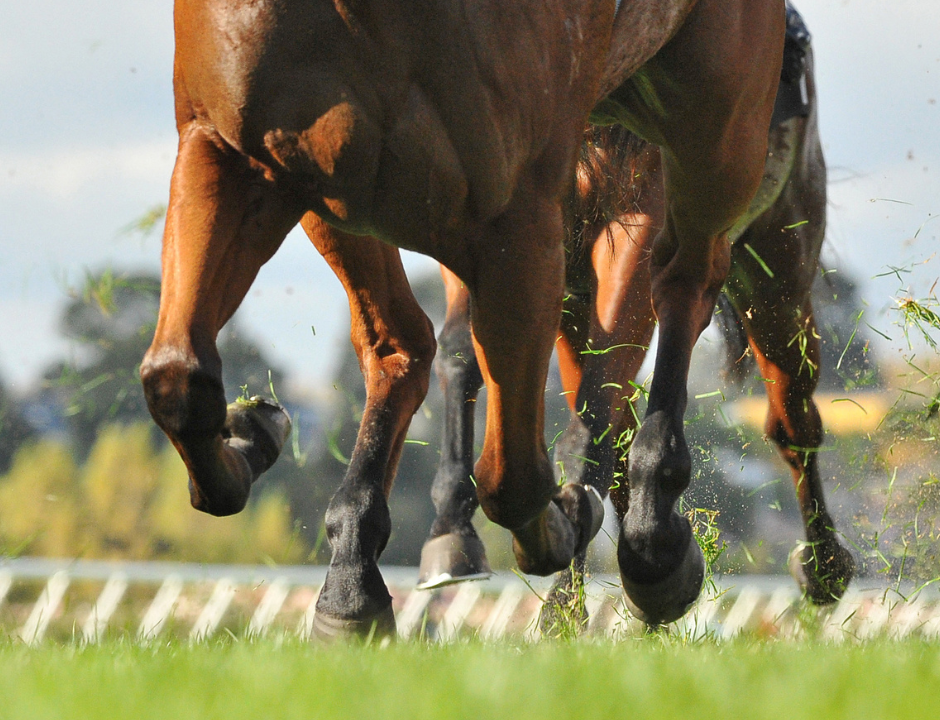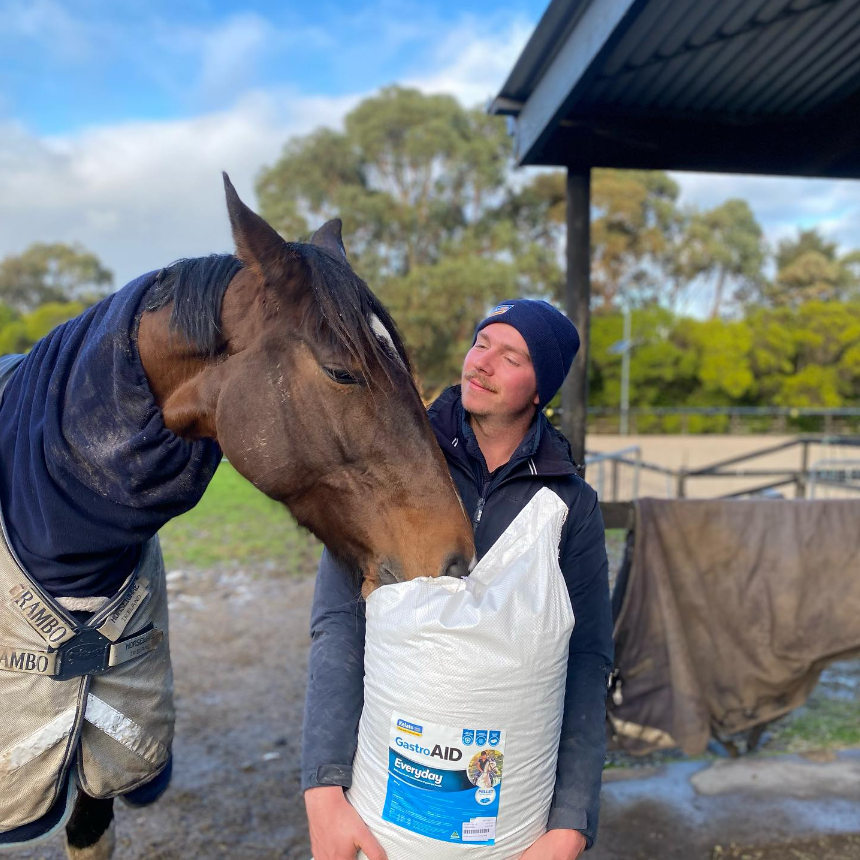What is EIPH?
EIPH is defined as bleeding from the lungs of horses during exercise (Hinchcliff et al. 2015). The condition is most frequently identified in Thoroughbred and Standardbred racehorses performing high-speed exercise, but cases can also occur in horses used for other disciplines such as western performance, eventing, show jumping and polo (Rendle 2016; Sullivan & Hinchcliff 2015).
How Common is EIPH?
- 43% – 75% of Thoroughbred racehorses exhibit blood within the trachea after a single tracheobronchoscopy performed within two hours of racing (Sullivan & Hinchcliff 2015). The prevalence of EIPH increases to greater than 85% with repeated examinations (Sullivan & Hinchcliff 2015).
- 11% to 46% of polo ponies were found to have EIPH after competition (Sullivan & Hinchcliff 2015).
- The prevalence of endoscopically evident EIPH in horses performing other disciplines, such as show jumping, has not been comprehensively evaluated (Sullivan & Hinchcliff 2015).
What Causes EIPH?
Increased blood pressure in lungs and considerable negative pressure within pleural cavity
High-intensity exercise causes a large increase in blood pressure within the blood vessels of the lungs (pulmonary vasculature) and marked negative pressure within the pleural cavity, which is the space that lies within the pleurae, the two thin membranes that line and surround the lungs (Sullivan & Hinchcliff 2015). Pulmonary arterial and venous blood pressures will increase three- to four-fold during strenuous exercise because of increased cardiac output (Rendle 2016).
Pulmonary capillary stress failure

Deep within the lung, thousands of tiny air sacs termed “alveoli” interface with capillaries, forming what is known as the blood-gas barrier (Geor 2001). The blood-gas barrier is incredibly thin (only 50 nanometres thick!) to allow oxygen to diffuse from the alveoli into the blood (Geor 2001). The dramatic increase in blood pressure within the lung during intense exercise places a lot of pressure on the pulmonary capillaries and causes them to rupture, termed “pulmonary capillary stress failure” (Geor 2001; Sullivan & Hinchcliff 2015).
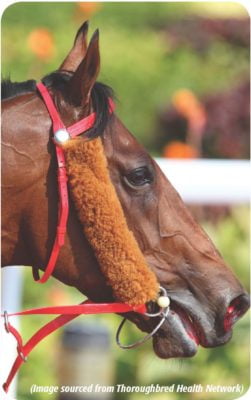
Clinical Signs
Subclinical disease is extremely common, but here is a list of some of the clinical signs associated with EIPH:
- Poor performance
- Stopping during exercise
- Epistaxis (bleeding from the nostrils) – Severe cases of EIPH and occurs relatively infrequently in 1.1% to 3.5% of Thoroughbred and Standardbred horses after racing (Sullivan & Hinchcliff 2015).
Risk Factors
- Intense exercise
- High-speed exercise
- Cumulative racing volume
- Age
- Steeplechasing/hurdling rather than flat racing
- Gender? – There is no consistent association between gender and EIPH, but epistaxis has occurred more often in male horses. This may be due to earlier retirement of female horses for breeding.
- Cool ambient environmental temperature (<20˚C )
Did You Know?
At the canter and gallop, the horse synchronises stride and respiratory frequency in a 1:1 ratio, which is known as respiratory-locomotor coupling (Hinchcliff et al. 2014; Marlin 2007). That is, they take one breath perfectly in time with one stride.
The amount of air moved in and out of the lungs increases in direct proportion to how fast the horse is running. If a horse runs twice as fast, it must move twice as much air in and out (Marlin 2007).
At rest, the horse will inhale approximately 67L of air per minute. During exercise, this can increase to 1800L per minute (Hinchcliff et al. 2014).
Diagnosis
There are a variety of techniques available for determining the presence and severity of EIPH, including direct visualisation of the airways through a flexible endoscope or examination of bronchial lavage fluid or trachea aspirates for evidence of haemorrhage (Hinchcliff et al. 2014).
The following grading system has been validated to estimate the severity of EIPH (Hinchcliff et al. 2014; Rendle 2016):

Grade 0: No blood detected in the pharynx, larynx, trachea or mainstem bronchi viewed from the tracheal bifurcation.
Grade 1: One or more flecks of blood or two or fewer short (less than one quarter the length of the trachea), narrow (less than 10% of the tracheal surface area) streams of blood in the trachea or mainstem bronchi visible from the tracheal bifurcation.
Grade 2: One long stream of blood (greater than half the length of the trachea) or more than two short streams of blood occupying less than a third of the tracheal circumference.
Grade 3: Multiple, distinct streams of blood covering more than a third of the tracheal circumference, with no blood pooling at the thoracic inlet.
Grade 4: Multiple coalescing streams of blood covering more than 90% of thetracheal surface, with blood pooling at the thoracic inlet.
How Can We Reduce The Risk of EIPH?
A supplement to designed to strengthen pulmonary capillaries and help reduce the risk of EIPH in hardworking horses. PulmonAID is recommended for all performance horses as a daily supplement to support normal integrity and function of the lungs.
Ingredients:
PulmonAID contains a combination of ingredients that work together to maintain the normal integrity and function of the lungs:
- Lecithin: A key component of the surfactant fluid that lines the lungs. Surfactants are important for the regulation of liquid balance within the airway, improved large airway clearance of fluid and control of pulmonary inflammatory response (e.g. during allergic reactions to dust).
- Chlorophyll: A potent antioxidant that mops up free radicals, preventing them from damaging cells, and protects against oxidative stress by inhibiting the cascade of free radicals. Chlorophyll also helps to dissolve mucous in the lungs by reducing inflammation.
- Vitamin A: An antioxidant that has a role in decreasing inflammation, alongside chlorophyll, and enhances chlorophyll’s activity.
- Vitamin E: An essential nutrient that cannot be synthesised by the horse and is a potent antioxidant that protects cell membranes from oxidative damage.
- Vitamin D3: High levels of vitamin D in the blood is linked to superior lung function (Wright 2005*).
*Wright, RJ 2005, ‘Make No Bones About It: Increasing Epidemiologic Evidence Links Vitamin D to Pulmonary Function and COPD’, Chest, vol. 128, no. 6, pp. 3781-3783.
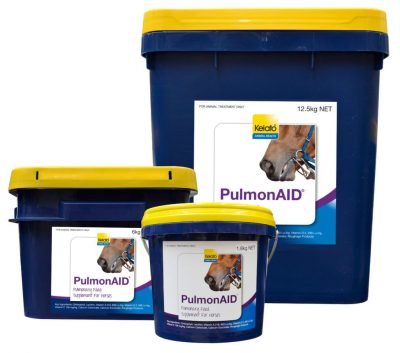
Directions For Use:
Maintenance:
- Feed 60g (2 level scoops) per 500kg bodyweight per day.
Exercise-induced pulmonary haemorrhage (EIPH):
- After a horse has suffered a bleeding episode, spell the horse in a paddock for at least 8 to 12 weeks.
- While the horse is spelling, commence feeding PulmonAID at 60g (2 level scoops) per 500kg bodyweight per day.
- Four days prior to a race or strenuous workout, increase to 120g (4 level scoops) per 500kg bodyweight per day, ensuring you comply with all relevant rules of the competition.
References
Geor, R 2001, EIPH: Exercise-Induced Pulmonary Haemorrhage, The Horse, Lexington, viewed 25 November 2016.
Hinchcliff, KW, Couetil, LL, Knight, PK, Morley, PS, Robinson, NE, Sweeney, CR & van Erck, E 2015, ‘Exercise Induced Pulmonary Hemorrhage in Horses: American College of Veterinary Internal Medicine Consensus Statement’, Journal of Veterinary Internal Medicine, vol. 29, pp. 743-758.
Hinchcliff, KW, Kaneps AJ & Geor R 2014, Equine Sports Medicine and Surgery – Basic and Clinical Sciences of the Equine Athlete, 2nd edn, Saunders Elsevier, Sydney.
Marlin, D 2007, The Airways and Lungs, The Horse, Lexington, viewed 25 November 2016.
Rendle, D 2016, Exercise-induced pulmonary haemorrhage: risk factors, clinical signs and prevention, Vet Times, United Kingdom, viewed 25 November 2016.
Sullivan, S & Hinchcliff, K 2015, ‘Update on Exercise-Induced Pulmonary Hemorrhage’, Veterinary Clinics of North America: Equine Practice, vol. 31, pp. 187-198.
Wright, RJ 2005, ‘Make No Bones About It: Increasing Epidemiologic Evidence Links Vitamin D to Pulmonary Function and COPD’, Chest, vol. 128, no. 6, pp. 3781-3783.
Want to find out more? Head to the PulmonAID page, get in touch on 1800 Kelato or email technical@kelato.com.au.
